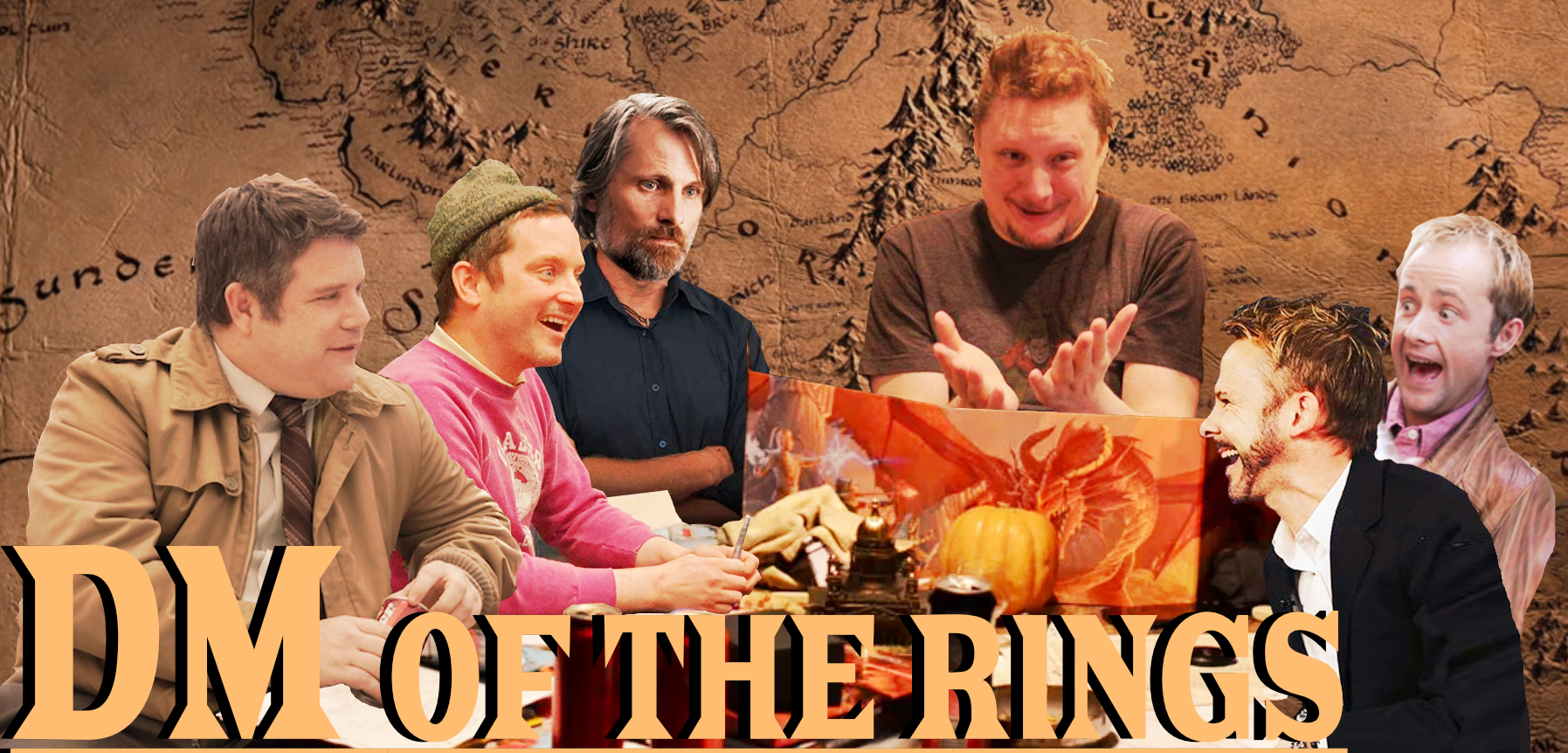
– Shamus, Monday Nov 6, 2006
My DM tried to pull the ‘acting out of alignment’ card once and I considered biting knees. One should ONLY bring into question a player character’s alignment if an act is extreme to one end or the other of either senseless violence or large selfless charity. If you bring it up every time there is a disagreement over what ”good’ ‘neutral’ or ‘evil’ is, you will both never get anything done, and frustrate the entire table. Anything ambiguous should pass automatically for the sake of sanity. There is no point arguing the philosophy of committing violent revenge, stealing from slavers, or dropping a coin in a beggars hat. Philosophy is a terrible tabletop game and no one can agree on the rules anyway.
Fixing Match 3

For one of the most popular casual games in existence, Match 3 is actually really broken. Until one developer fixed it.
Dead Island

A stream-of-gameplay review of Dead Island. This game is a cavalcade of bugs and bad design choices.
PC Hardware is Toast

This is why shopping for graphics cards is so stupid and miserable.
Are Lootboxes Gambling?

Obviously they are. Right? Actually, is this another one of those sneaky hard-to-define things?
Do It Again, Stupid

One of the highest-rated games of all time has some of the least interesting gameplay.
 T w e n t y S i d e d
T w e n t y S i d e d

Philosophy is a great TTRPG! It’s called Mage: The Ascension, and it’s awesome. And yeah nobody can agree on how to actually play it, but I love it.
It’s been years since I last argued it with a Storyteller but I was able to justify pretty much anything I wanted to do with enough points in Entropy. When your bailiwick is probability, reality is your #$%!@
As a person who played the older editions of D&D, I think a lot of this is that we used to try to use alignment to do two things that we now have better mechanics or practices for.
Some alignments were more difficult than others in terms of restricting which in-game problem-solving tools you could use, so being those alignments was a way to bring extra restrictions/challenges to your gameplay, kind of like doing a no [whatever] run in a video game. It was also a way for the various classes to feel more different from each other when there were fewer mechanical differences, since class x had to behave in way y, but class z had a different set of behavior restrictions. (If you saw your character more as a bundle of tactical problem-solving tools rather than as someone undergoing a narrative journey, this also seems a little more reasonable – it’s like how chess pieces all move differently in specific ways by the kind of piece they are, no matter what narrative arc I may have in mind for my little horsey guy and his journey around the board. This may be part of why I don’t enjoy chess, since I’d rather tell stories about my particular little horsey guy.) I haven’t played D&D since 2nd edition, but I get the idea that there are a lot more ways to customize these kind of restrictions to the specific character concept you’re actually playing now, and in a narrative-focused group people would be thinking about what their specific character would actually do next rather than what tool to optimally implement from the pile of tools listed on their character sheet anyway. This was one of the reasons my gaming group mostly played GURPS back when D&D was in 2nd edition – you could develop characters with finer-grained codes of behavior or various other play restrictions using disadvantages, so you could document the specific restrictions you actually planned to play that character as having.
The other way alignment used to be used that we DEFINITELY have better tools for now is as part of the session zero/group agreements piece. A DM telling their group something like “all of you have to be of one of the three Good alignments, unless you really, really want to play a druid in which case you can be Neutral (which was only allowed druid alignment in that edition)” was a way to get at what kind of behavior will be acceptable at that table. I see so many better ways that people handle this now, with actual, specific discussions about what kinds of things are and aren’t going to be part of the game rather than an attempt to just use alignment to limit it (and then all of the disagreements about what PCs of that alignment can do, which mattered because the DM was using it as a shorthand for those other things that weren’t going to be allowed at their table).
Modern DnD has almost no mechanical aspect to alignment any more. There are a few vestiges like detect evil and good, but for the most part it’s a choice to inform your roleplaying. I have had a DM threaten forcibly changing a player’s alignment when they consistently behaved in w way that didn’t match what was on their character sheet, but that just kind of feels like updating the characterisation information
Even that spell is a misnomer. It actually functions more like Detect Supernatural.
Ah yes, one of my GMs tried to rope a party into a bit of “workers vs evilcorp” dispute in our last game, except the corp offered us to fix our ship if we just bugger off while workers offered nothing except for good feels. It was a very quick moment of “anybody heroic? no? anybody pragmatic? two people? motion to get our ship fixed and carry on with the main quest passed”. To be fair the GM was fine with this (as GMs should be knowing who they have in a party and he did not object to these traits at character creation) or at least rolled with it very well.
Yeah. That’s why I dislike mechanical alignment. It’s such a temptation for a GM to engineer a situation where it will come into play. Even if the GM has good intentions, taking choices away from the players is rarely fun.
Sam’s “You cheap railroading bastard!” is right on for how mechanical alignment usually works.
That’s something many old-school Paladins experienced with antagonistic DMs. “Here’s a no-win moral dilemma! How are you going to resolve this NOW, Mr. Paladin? Whichever path you choose, you’re losing your powers and becoming a fallen Paladin.”
Just in case the situation I presented did not come through clearly: It was literally the second session and the second adventure of that party, and the first one was a combat heavy “encounter with a hostile alien drone”, in other words literally the first situation where the party ethics and morality compass came into play and I think it’s good to have these kinds of things established and set up early on. I remain steadfast in my interpretation that the GM wanted us to participate in the conflict more actively and favoured the workers side but we have a disabled alien drone onboard that may be worth a small fortune (and the longer we keep it the better probability it will do something and kill us all). My point is, this was not railroading or bruteforcing by the GM.
Also, I’d describe your example as a pathology but I am not against this kind of dilemma in principle. As a more popcultural example in Order of the Stick (for those not in the know, it’s a comics where characters are aware they exist in a universe that follows roughly D&Dlike rules: they know they have levels, hit points, alingment etc.) Roy, although not a paladin, defines himself as lawful good and at one point he
dies and his life is reviewed for the purpose of letting him into the lawful good heaven equivalent. Numerous issues are pointed out but ultimately the deva doing the job says he is in “because he tried”, unlike his father who swore a blood oath and then basically kept postponing following it “till later”. So yeah, I don’t think the point should be to “trap” the person whose powers are alingment dependent, I also don’t think shifts should happen barring either persistent or egregious breaches of alingment. On the other hand if you are a paladin, a cleric or otherwise dependent on a patron who should have supernatural awareness of whether or not you’re acting in accordance with their ethos it makes sense that you shouldn’t just ignore it.It also obviously depends on what kind of game you’re playing/running. Sometimes you’re playing a fun dungeon romp, sometimes you’re playing trolley problems in practice.
I could probably write a 20-page essay for how much I dislike Alignment, how much it fails at being a moral philosophy, and how it’s detrimental to the game, but I think it would probably bore most people.
Do it! Do it! DO IT!
I would probably read it.
But you are suggesting it would take you 20 sides of paper to finish the essay. :)
For some reason I feel that that might be something Shamus would have gotten on board with.
Please do :)
Umm…what website do you think you’re on where you think that would be inappropriate? Did you miss all the ranting about paragrade in the archives?
French translation here: https://dmoftheringsfr.blogspot.com/2023/07/a-nos-chers-sacrifies.html
Ironically I think the original idea behind alignment was to largely avoid getting into the nitty gritty morality philosophising. The world is fairly clearly delineated: there is objective evil and objective good, there are spells that can tell you where a given person or even thing lies* and heck, oftentime you don’t even need to bother because this being is Always Chaotic Evil**. It is okay to go into evil’s place, kill it and take its stuff, and evil will always cause problems to solve simply because it is evil. Conflicts along chaotic-lawful axis were much less common (except for something endemic to the system like the Blood War) in campaigns and usually meant there could be a middle ground solution of some sort, or the conflict was sparked by some kind of manipulation by, you guessed it, eeeevil.
*To be fair IIRC in ye olde D&D it was stated that the spells detected only very strongly aligned creatures or phenomena, like, they wouldn’t react to a greedy merchant who cheats their clients or a caring parent.
**Which is really problematic when you think about it and said problems are one of the reasons why the alignment constrains have been severely loosened down the line.
Honestly, I always liked the lawful/chaotic dimension more for making the gameplay interesting. Good vs evil descends into a boring philosophy debate very quickly. Lawful/neutral/chaotic is about practicality and means to an end.
Example – some noble in town has an artifact that you need on the quest to save puppies and orphans. He won’t give it to you. If you have that quest, you’re already already good (or at least good-neutral mix).
G/E will lead to a debate on the ethics of stealing to do good. L/C is much more pragmatic debate about means. Are we so lawful we wouldn’t steal it? What about make threats? Can we lie about what we need it for? That’s gameplay.
I miss my chaotic good rogue, who, in the middle of the noble’s monologue about how he was the rightful owner because his grandfather recovered it from… simply stabbed the noble and calmly took the artifact. And explained to my somewhat stunned party that if he refused to lift a finger to help in such an obviously good quest, he was clearly unfit to rule.